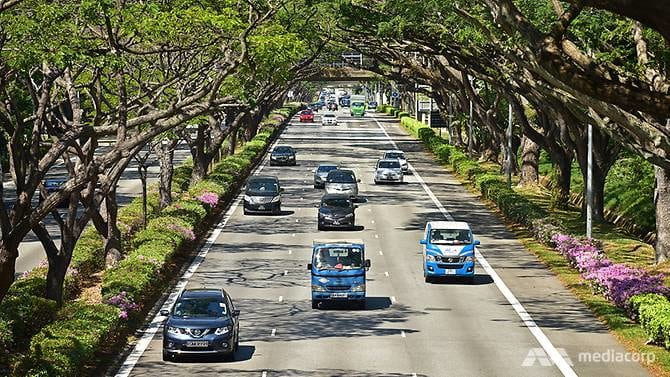As we all know Singapore is an urbanized city, it has grown tremendously since 1965 upon independence. The growth of a country comes at the expense of increased pollution and Singapore is no exception.
Previously, I have shared an action that was taken by China to reduce their air pollution index. Can the same measure be implemented in Singapore? What are other initiatives taken and how effective are they? Let’s find out.
Singapore unlike other countries has many constraints. It has limited land and natural resources thus it is challenging for Singapore to develop economically yet sustainably. Despite its circumstances, Singapore has proven itself to be one of the most livable and sustainable cities (Singapore Exhibition and Convention Bureau, 2016).
Singapore knew that in order to grow economically, the measures it implemented must be sustainable. It is only when nature and the environment is protected that we humans can prosper.
Similar to China, Singapore’s roads and walkways are mostly covered with trees and plants and Singapore has plans to cover more walkways with plants in the next 3 to 5 years (Yong, 2018). It aims to reduce the urban island heat effect thus resulting in a cooler and comfortable space (Yong, 2018).
Carbon dioxide contributes to air pollution in its role in the greenhouse effect. By having more greenery around the city, there will be more trees to sequester carbon emitted by the vehicles along the roads.

 Photos of Singapore covered with greens
Photos of Singapore covered with greens
To be honest, greenery in Singapore is quite a common sight. Almost everywhere we go, there will be trees or plants surrounding us. When we look out of our homes, there will be many trees. But how effective is this? There aren’t any statistics that show the changes. Singapore’s temperature certainly does not reflect it as well!
Planting trees indoors for Singaporeans is a big No-No. Firstly, as most of us live in HDB, there isn’t enough space to grow a single tree and your neighbors might complain. A good alternative would then be to grow plants, some might say. Furthermore, it is only mature trees that are more effective in absorbing carbon. Thus, the ability of plants and young trees to absorb carbon is questionable. In addition, growing trees take time, and thus we are only able to see the effects of the trees in the near future. So is this enough? What other programs are set in place?
Besides planting more trees and plants, buildings are built with alternative energy to power the entire building. Some examples are CapitaGreen, National Gallery Singapore, and Zero-Energy Building at the Building and Construction Authority Academy. Besides adding greenery to the surroundings, solar photovoltaics are used to generate energy and this reduces the amount of fossil fuel burnt thus reducing the emission of harmful air pollutants. But are solar photovoltaics really effective?
Though they have a variety of advantages, solar photovoltaics has presented its own disadvantages as well. Some disadvantages include having low-efficiency levels, only able to absorb solar energy in the daytime when there is sunlight, they are fragile and can be damaged easily etc.



Photos of green design buildings in Singapore
With land and natural resource scarcity, Singapore is unable to use renewable energy sources like wind and water. Thus making solar energy the next best renewable energy it can explore with. All in all, I would say that Singapore is trying its best to come up with solutions to combat climate change and air pollution. I feel that it has done what it could, given its obstacles, and is still coming up with innovative solutions.
Are there other ways that we can reduce air pollution? Share your thoughts with us 🙂
Till next time!
Your environmental buddy,
Jeanice
References
Busta.H. (2016). Postcard from Singapore: An Inside Look at Green Design in the Tropics. [Online Images]. Retrieved from: https://www.architectmagazine.com/technology/postcard-from-singapore-an-inside-look-at-green-design-for-the-tropics_o
Chandramohan.G. (N.D.). Photos of cars on expressways in Singapore. [Online Image]. Retrieved from https://www.channelnewsasia.com/news/singapore/new-technology-driving-traffic-singapore-roads-11688500
Darke.A. (2019). The new tech driving traffic on Singapore’s roads. Retrieved from: https://www.channelnewsasia.com/news/singapore/new-technology-driving-traffic-singapore-roads-11688500
Ho.R. (N.D.). A flourishing trellis on a covered linkway to Pasir Ris MRT. NParks has greened 27 such linkways to date and plans to cover more in the next three to five years. [Online Image]. Retrieved from https://www.straitstimes.com/singapore/environment/more-green-walkways-for-nparks-city-in-a-garden-vision
Singapore Exhibition and Convention Bureau. (2016). How Singapore’s lack of natural resources yielded a model contemporary city. Retrieved from: https://qz.com/629993/how-singapores-lack-of-natural-resources-yielded-a-model-contemporary-city/
Renewable Energy World. (2012). Advantages and disadvantages of Solar Photovoltaic – Quick Pros and Cons of Solar PV. Retrieved from: https://www.renewableenergyworld.com/2012/12/19/advantages-and-disadvantages-of-solar-photovoltaic-quick-pros-and-cons-of-solar-pv/#gref
Yong.R. (2018). More green walkways for NParks’ City in a Garden vision. Retrieved from: https://www.straitstimes.com/singapore/environment/more-green-walkways-for-nparks-city-in-a-garden-vision
